Disaster Dining: Taste Testing Japan’s Emergency Foods
Newsfrom Japan
Society Disaster Lifestyle Food and Drink- English
- 日本語
- 简体字
- 繁體字
- Français
- Español
- العربية
- Русский
This summer brought sharp reminders of the risk of disaster in Japan in the form of typhoon-fueled torrential rains and a magnitude 7.1 earthquake off the coast of Miyazaki Prefecture on August 8 that sparked a government warning of potential activity along the Nankai Trough.
Residents of Japan are encouraged to prepare disaster kits containing supplies of water, food, and items like batteries, flashlights, and hygiene products. Many municipalities provide stockpiling checklists in multiple languages. The Tokyo Metropolitan Government, for instance, runs the site Tokyo Bichiku Nabi that provides recommendations on the types and amounts of items to be stockpiled based on the size and makeup of households. The service is available in Japanese and English and contains hazard maps and other disaster preparedness information.
Tokyo Bichiku Nabi
https://www.bichiku.metro.tokyo.lg.jp/en/tool/
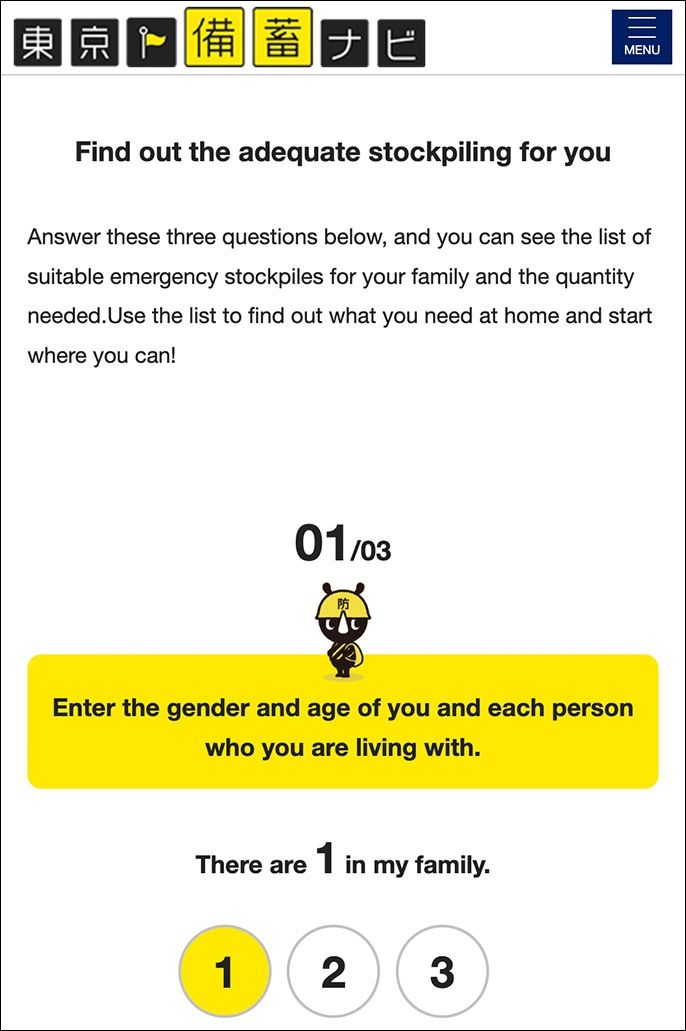
Users enter the number and age of household members to receive a recommendation on what and how much to stockpile. (Courtesy Tokyo Metropolitan Government)
People are advised to check disaster preparedness websites in the areas where they live or work as information and recommendations may vary depending on factors like geography and climate. However, any disaster kit at the minimum should include enough water and nonperishable foods to last several days in case utility services are knocked offline.
There is a vast array of emergency foods to choose from in Japan, ranging from freeze-dried rice to ready to eat dishes in pouches. Here at Nippon.com, we decided to taste-test some products as part of a recent renewal of our rolling stock of disaster items at our Tokyo office.
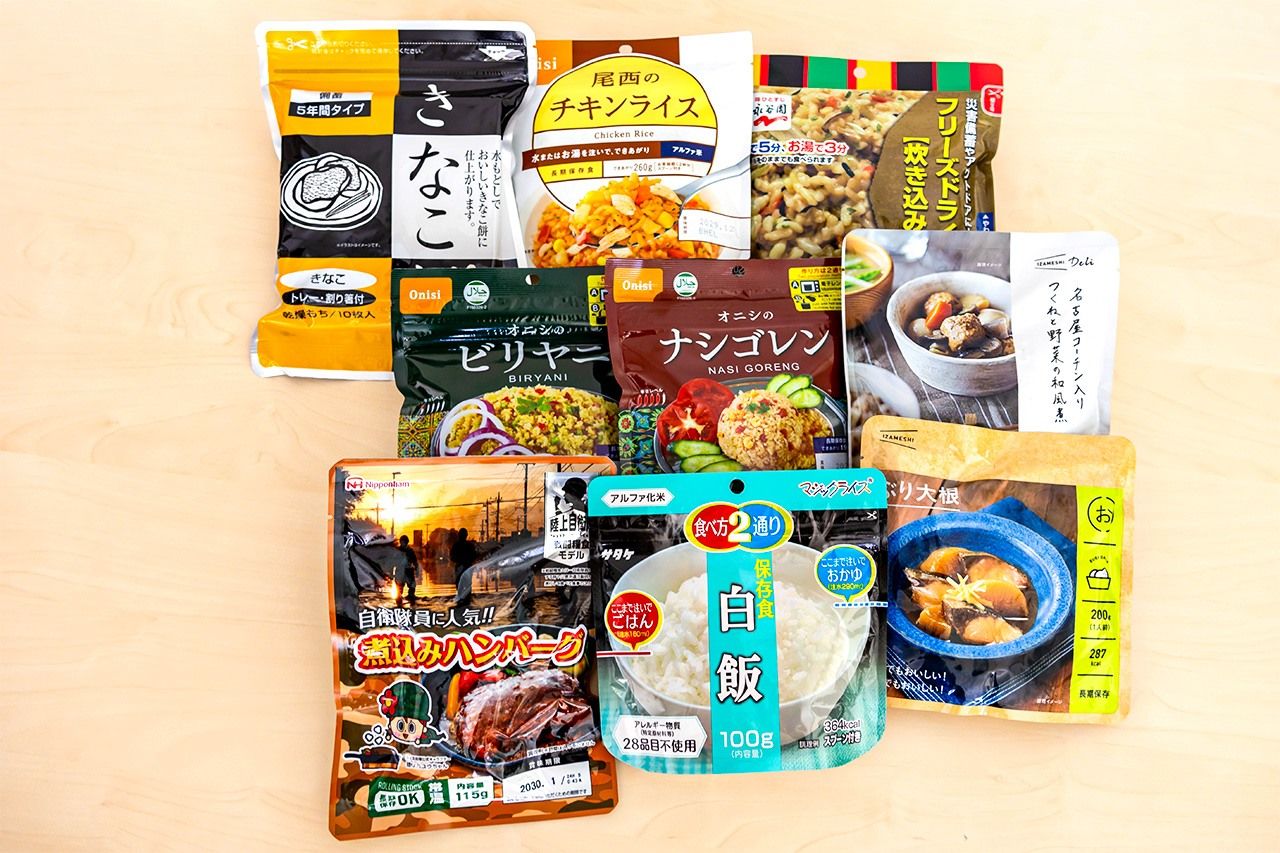
A selection of emergency foods available in Japan. (© Nippon.com)
Emergency foods stored at room temperature typically have best-by dates of three to five years. Among the items that we sampled, the one with the longest shelf life was the freeze-dried mixed rice by maker Nagatanien at a whopping eight years.
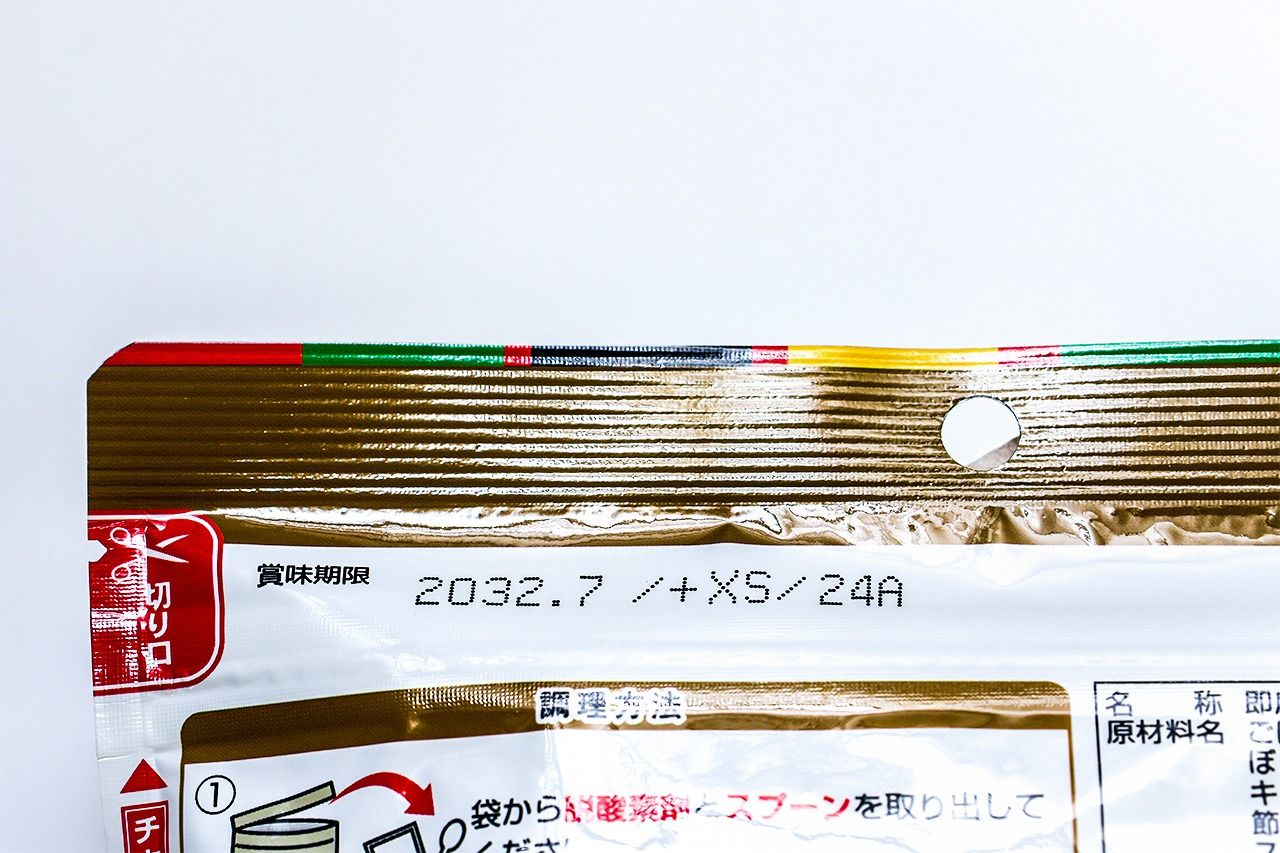
The longer the shelf life the better, as with this packet of Nagatanien mixed rice that is good until July 2032. (© Nippon.com)
Packets of freeze-dried rice are hearty emergency meals that can be easily prepared with either hot or cold water. The instructions for the plain white rice by maker Satake that we tried recommended steeping the rice for 15 minutes in hot water or one hour when using cold water. Other varieties require less time to prepare, such as Nagatanien’s mixed rice, which is ready to eat in just three minutes if using hot water and five minutes with cold water.
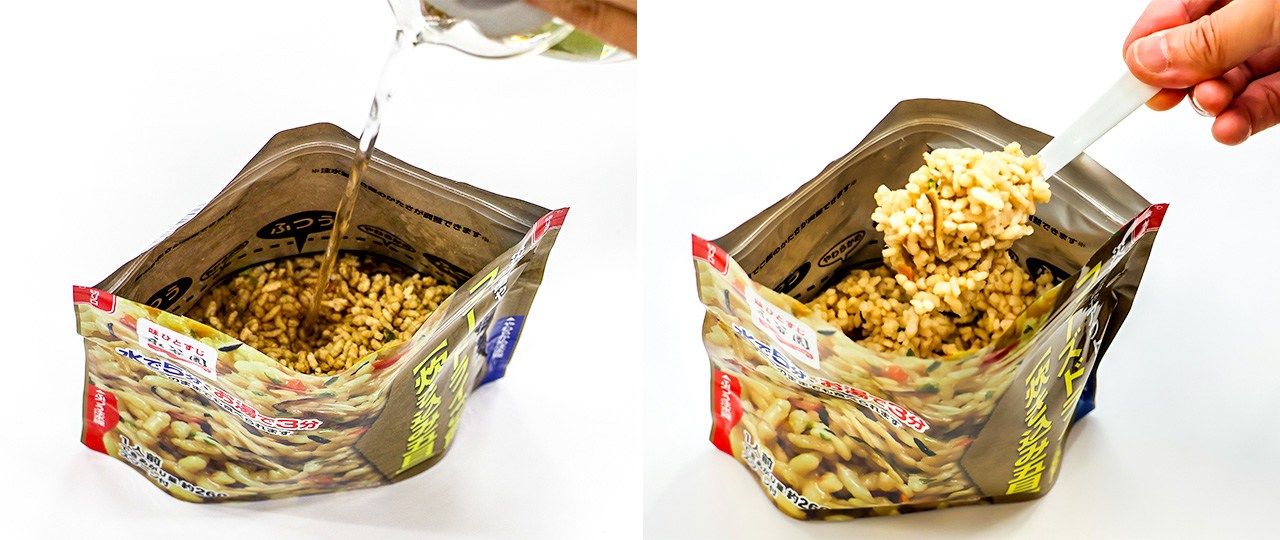
Nagatanien’s mixed rice takes just a few minutes to prepare. (© Nippon.com)
Another quick and easy rice-based option that we sampled was mochi with sweetened soybean powder (kinako). The freeze-dried rice cakes take one minute to reconstitute in water, with the soybean powder ready to use as is.
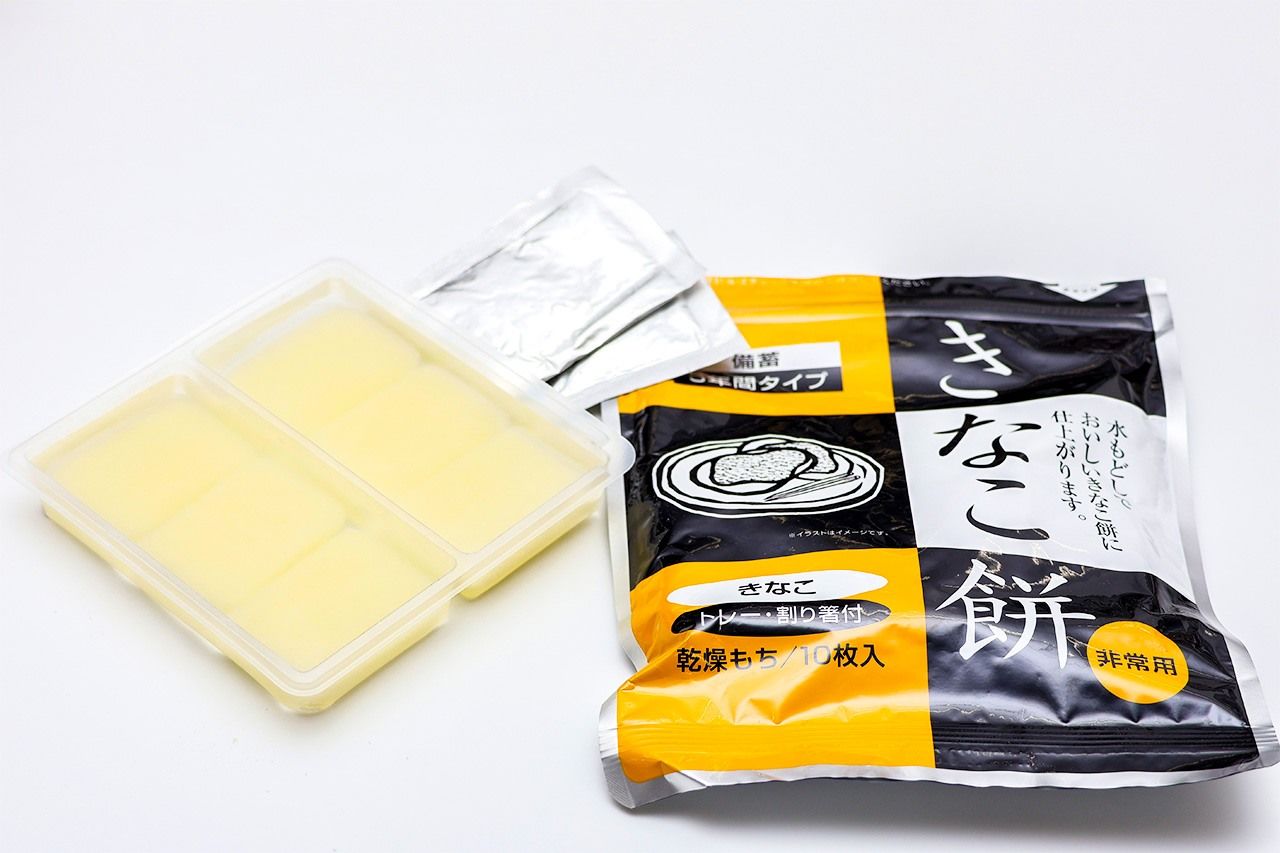
Kinako mochi by Tokyo Colony. (© Nippon.com)
Retort packages are an even faster option as the precooked meals need only be opened and can be eaten either directly from the package or served on a dish. We tried the simmered yellowtail and daikon (buri daikon) and Japanese-style meatball and vegetable stew by Sugita Ace and Nippon Ham’s stewed Salisbury steak.
Emergency food maker Onishi Foods offers several halal options, including the South-Asian mixed rice dish biryani and Indonesian fried rice nasi goreng.
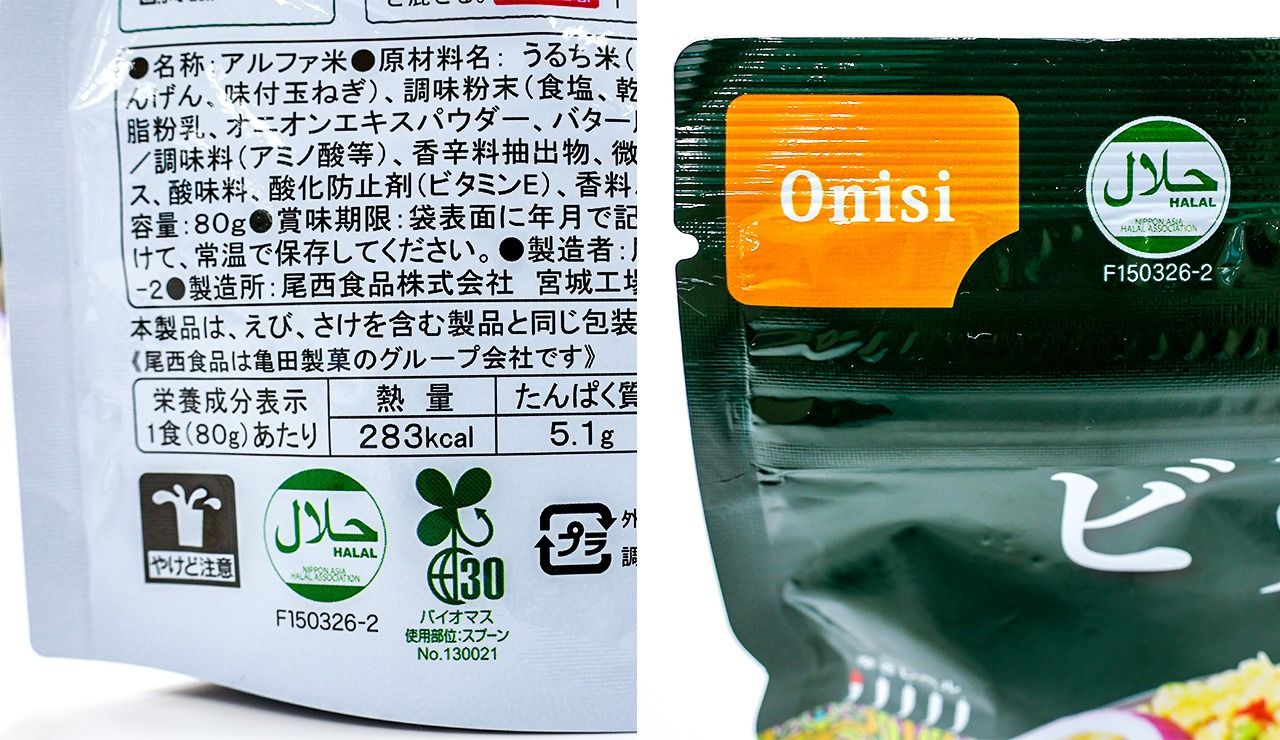
The package of Onishi Foods’ biryani prominently displays a halal mark. (© Nippon.com)
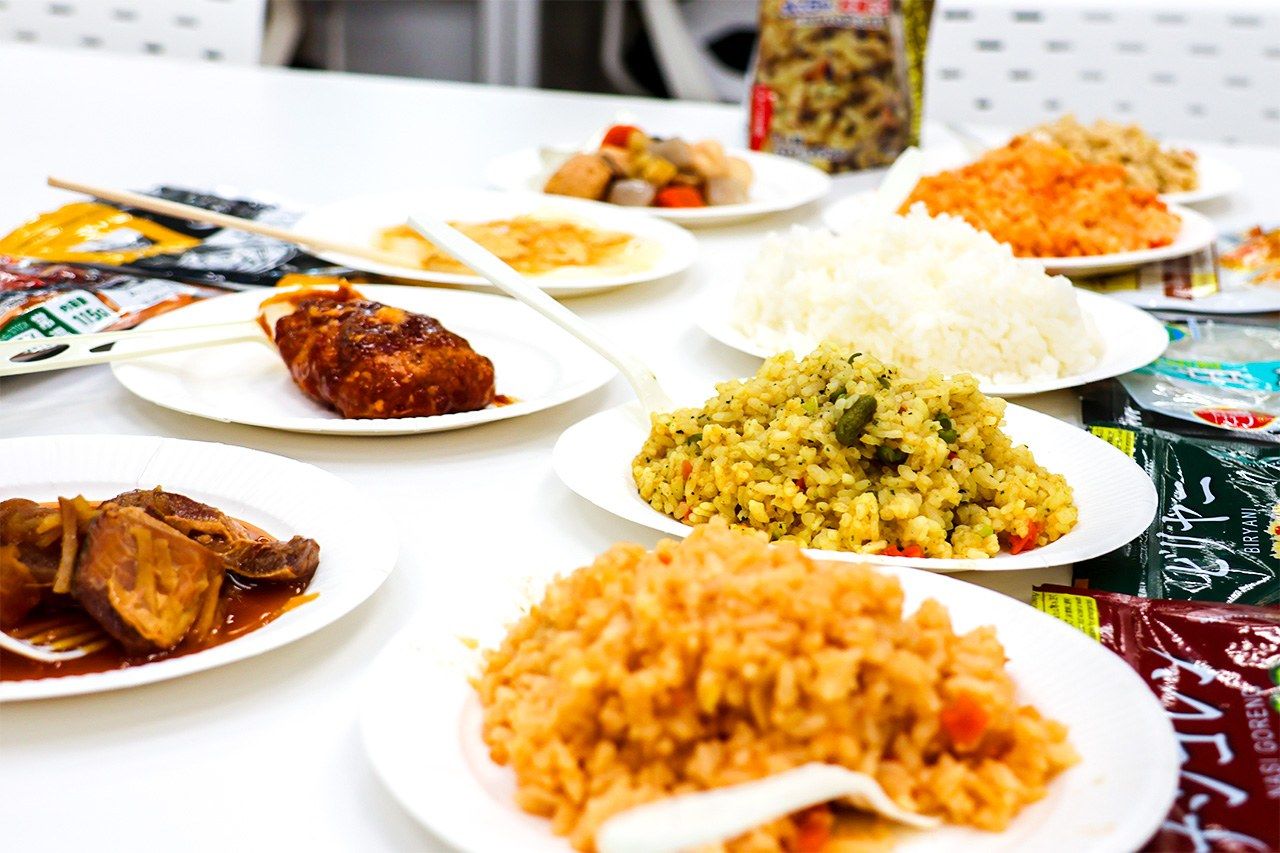
Served on plates, emergency foods look fresh and tasty. (© Nippon.com)
An Egyptian-born editor for the Nippon.com Arabic site noted the difference in emergency foods in Japan, noting that people in Egypt typically keep a stock of dried dates and other fruits in case of disaster. Trying the biryani and nasi goreng, he lauded the slightly spicy flavor. Another Arabic editor, also from Egypt, expressed a sense of ease as a practicing Muslim at having halal options available. She also praised the taste and texture of the freeze-dried white rice, saying it was “no different than rice made in a cooker.”

An Arabic editor at Nippon.com tucks into a plate of biryani. (© Nippon.com)
Our Japanese and foreign-born staff were universally impressed with the flavor and texture of dishes as well as the variety of options available. The quality of the freeze-dried rice in particular took many by surprise. The makers that we tried recommended using hot water for the best results and to provide a warm, comforting meal. For comparison, we made Nagatanien’s mixed rice using regular tap water and found the quality to be on par with the rice dishes made with hot water.
The chicken rice by Onishi Foods received wide praise as being suitable for both children and adults. An American-born editor told how in the United States, canned goods like soups serve as emergency food staples and welcomed the fresh flavor of the different rice dishes.

Staff try different emergency foods. (© Nippon.com)
Among the retort dishes, the yellowtail and daikon proved a hit, with the ginger flavor making it suitable for even non-emergency meals. The stewed meatballs and vegetables also drew applause, particularly for the firmness of ingredients. A Ukrainian-born editor said he favored the Salisbury steak, describing its hearty texture and flavor as similar to meatloaf.
Everyone agreed on the kinako mochi, the only sweet food on the menu.
Japanese food makers have made strides in changing the bland image of emergency food by developing high-quality versions of traditional and other dishes. Most staff expressed little previous interest in what was on the market, but after tasting dishes, many said they were keen to explore the realm of emergency foods.
(Originally published in Japanese. Banner photo © Pixta.)
